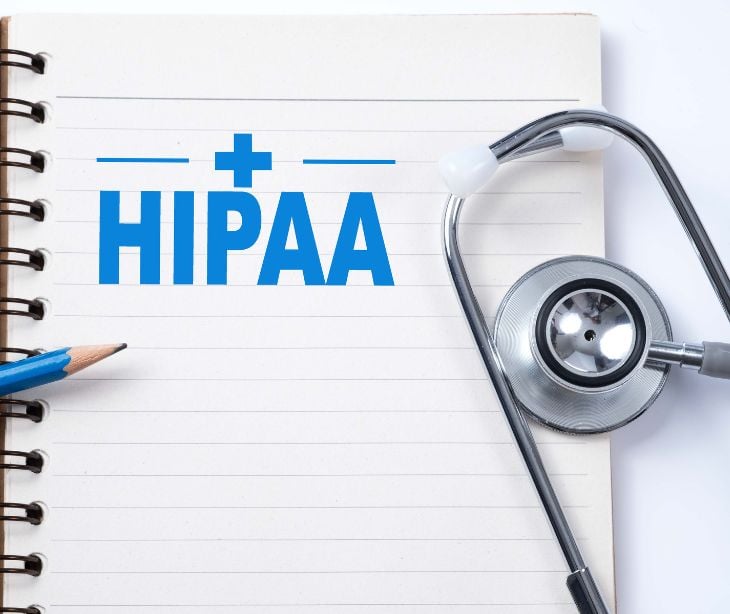4 min read
Integrating cultural responsiveness into healthcare
Kirsten Peremore
Apr 8, 2025 6:03:03 AM

According to a Tulane University article, healthcare environments that respect and are aware of different cultures “create more satisfying experiences for patients.” The articles adds that “true cultural competence must measurably reduce disparities and improve clinical outcomes throughout a variety of contexts.”
Rooted in the broader framework of cultural competence, cultural responsiveness is a dynamic, ongoing adaptation rather than static cultural knowledge. It prioritizes understanding patients’ cultural contexts, like beliefs about illness, family dynamics, and communication styles.
A journal article from the Multicultural Education Review notes, “Culturally responsive teaching argues, instead, that no ethnic group should have exclusive power, or total cultural and political dominion over others, even if it is a numerical majority…Rather, ethnic, racial, cultural, social, and linguistic pluralism is considered as a natural attribute of humankind, as a fundamental feature of the democratic ethos... and as a necessary component of quality education in both national and international contexts.”
It reflects a recognition that rigid, one-size-fits-all healthcare approaches often fail to meet the needs of diverse populations, particularly those historically excluded from equitable care. In healthcare communications like email, cultural responsiveness is integrated through strategies that balance security, accessibility, and cultural sensitivity.
There are still challenges that persist with email, which mitigates verbal and nonverbal miscommunication by providing a written, asynchronous medium, but it risks depersonalization if not carefully designed.
Cultural responsiveness in healthcare
Cultural responsiveness in healthcare refers to the practice of recognizing, respecting, and adapting care to align with the diverse cultural values, beliefs, and needs of patients. It arises from efforts to address health disparities and inequities faced by marginalized groups, such as racial minorities, immigrants, and LGBTQIA+ communities. It is based on the understanding that culture shapes how individuals perceive health and illness, as well as how people communicate and make decisions. By acknowledging how culture factors in, healthcare providers can deliver personalized care that improves patient trust.
According to a study by the BMC Health Services Research ‘Exploring the incidence of culturally responsive communication in Australian healthcare: the first rapid review on this concept,’ “The literature indicates the positive effects of culturally responsive communication upon both the healthcare process and related outcomes…These positive outcomes relate to the fundamental right of every human to experience health as well as satisfaction with the healthcare process.”
Cultural responsiveness, therefore, promotes health equity by removing barriers that prevent marginalized populations from accessing quality care. For example, a culturally responsive approach might involve tailoring communication styles to accommodate linguistic preferences or incorporating traditional health practices into treatment plans. This addresses the power imbalances inherent in provider-patient relationships by prioritizing collaboration and mutual understanding.
The characteristics of cultural responsiveness
A study from the University of Tlemcen, Algeria notes that cultural competence is, “a set of congruent behaviours, attitudes, and policies that come together in a system, agency, or among professionals that enable them to work effectively in cross-cultural situations.” The characteristics that divert cultural competence to cultural responsiveness can be summarized as:
- Linguistic responsiveness: Providing language services and communication that aligns with patients' linguistic preferences.
- Behavioral responsiveness: Adapting care to align with patients' cultural behaviors and practices.
- Cognitive responsiveness: Understanding and respecting patients' beliefs, attitudes, and perceptions about health and illness.
- Emotional responsiveness: Recognizing and addressing the emotional and psychological aspects of care within a cultural context.
- Spiritual responsiveness: Accommodating patients' religious and spiritual needs, especially in palliative and end-of-life care.
- Dietary responsiveness: Considering and accommodating food preferences based on cultural backgrounds.
- Gender responsiveness: Providing access to health professionals of the same gender when culturally appropriate.
- Decision-making responsiveness: Adapting to cultural norms regarding who participates in healthcare decisions.
- Accessibility responsiveness: Ensuring that cultural factors are not barriers to receiving quality care.
- Community responsiveness: Building knowledge about and engaging with local communities to better serve their specific needs.
The importance of patient-provider interactions in healthcare
Interactions with providers shape patient experiences, influencing health outcomes and establishing trust. Positive interactions are characterized by competence (the provider’s ability to demonstrate knowledge, skill, and efficiency) and warmth (the provider’s capacity to connect with patients through empathy, active listening, and personalized care).
According to a Frontiers in Psychiatry study, “Patients’ assessments of a provider likely also follow these two key dimensions of social perception, but with a slightly different flavor. We propose a healthcare-specific framework in which patients assess competence by judging whether the provider “gets it” (i.e., demonstrates efficiency, knowledge, and skill)
and assess warmth by judging whether the provider “gets me” (i.e., demonstrates personal engagement, connection, and care for the patient; in other words, whether a provider sees a patient as a social being, and not just in terms of their health or illness).” Together, these dimensions create a foundation for effective communication that supports mutual respect and collaboration.
How cultural responsiveness improves communication
According to an NIH Public Access Author Manuscript, “Seven dimensions of patient-centered care were identified: 1) respect for patient values, preferences and expressed needs; 2) coordination and integration of care; 3) information, communication and education; 4) physical comfort; 5) emotional support and alleviation of fear and anxiety; 6) involvement of friends and family; and 7) transition and continuity.”
Cultural responsiveness builds upon these principles to improve clarity and empathy. Using language services or tailoring messages to reflect cultural norms ensures that patients fully comprehend their diagnoses and treatment options. It is especially necessary in cross-cultural interactions where language barriers or differing health beliefs might otherwise lead to confusion or mistrust.
Marginalized communities often face systemic barriers to equitable care, such as implicit biases or discriminatory practices. Providers who actively practice cultural responsiveness demonstrate a commitment to equity by recognizing these challenges and adapting their care to meet the needs of each patient.
Using communication techniques and language services
- Emails can be personalized to align with patients' cultural values, beliefs, and communication styles. For instance, providers can adapt language, imagery, and timing of communications to reflect cultural norms, such as sending greetings during holidays like Diwali or Eid. It helps break down barriers by demonstrating respect for patients' individuality and ensuring messages are relevant and understandable.
- Email platforms can integrate professional translation tools to bridge language gaps, ensuring accurate communication with patients who speak different languages. This reduces intercultural miscommunication and enhances patient understanding. Providers should exercise caution with automated translation tools to avoid inaccuracies that may lead to misunderstandings.
- Emails can include links or attachments to multilingual educational materials such as brochures, videos, or websites that explain medical conditions and treatments in the patient’s preferred language.
- HIPAA compliant email systems like Paubox ensure patient privacy while enabling culturally sensitive communication. These platforms protect sensitive information through encryption and secure transmission. Providers can use these systems to safely share personalized health advice.
- Email communication can complement professional interpretation services by providing written summaries of discussions held during consultations.
FAQs
What should providers know when offering language services under HIPAA?
When using interpreters or translation services, providers must verify that these services comply with HIPAA privacy rules. This includes using professional interpreters who are trained to handle sensitive information.
What precautions should be taken when sharing culturally tailored educational materials?
Materials should be generalized for educational purposes while still resonating with the target cultural group.
What challenges do emergency teams face in being culturally competent?
Time is often short, and providers may not know every cultural practice. Also, language differences and unconscious biases can make it harder to understand what patients really need in a crisis.
How can emergency services prepare for the cultural needs of their local community?
By researching the community’s demographics, collaborating with local cultural organizations, and including cultural competence in training programs and protocols.


%20-%202024-12-09T061942.534.jpg)

%20-%202024-09-24T062757.836.jpg)